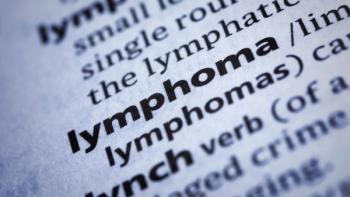
New Initiative Aims to 'Lock Up Lung Cancer'
Lock Up Lung Cancer is a new campaign to expose the disease as a prolific killer, according to LUNG FORCE.
Lung cancer diagnoses have become increasingly more common among women in the United States. However, only 18 percent of those cases are diagnosed early, when the disease is most curable, according to statistics from American Lung Association’s LUNG FORCE initiative.
The advocacy organization wants to change disease outcomes by putting lung cancer on women’s radar.
Please briefly discuss the “Lock Up Lung Cancer” campaign.
It’s being held during November, which is lung cancer awareness month. It focuses on lung cancer in women since it is the number one cause of cancer death in women and men. This campaign is to try to get information out about lung cancer to keep it on women’s minds as a significant cancer, and what they can do in terms of the (disease). For example, screening of patients at high-risk and smoking cessation. It’s going to be a “true crime” campaign with stories of patients with lung cancer.
Is there an explanation as to why there has been a rise in lung cancer in women, especially non-smokers?
Lung cancer has always happened in people who have never smoked. Approximately, 15 percent of patients with lung cancer, according to some databases, being non-smokers or patients who have smoked very little (less than a pack a day for 10 years). It isn’t clear why these people get lung cancer. There are some theories about environmental exposures, such as radon. Clearly tobacco is not the first culprit, since these patients have smoked very little, although they may have had significant second-hand exposure.
What are symptoms that women should watch for?
The most common symptoms of lung cancer are respiratory symptoms. For example, a cough that doesn’t go away, coughing up blood, shortness of breath or unexplained shortness of breath. Most patients with lung cancer will have that type of symptom first. Those are symptoms of the disease just in the lung. Some patients will be diagnosed with lung cancer because they have it already outside of lung and those symptoms are typically pain from disease in the bone.
What are the chances of a woman being cured if her cancer is found early?
The only lung cancers that can be cured are the cancers that are found early. That depends on the stage, basically, how far the tumor has gone from the original site. If patients are found with very early cancer, there might be an 80 to 90 percent chance of being cured. If patients are found to have lymph nodes already in the center of the chest, then that cure rate goes down significantly to somewhere around 30 percent.
What treatment advances are you most excited about?
There have been two big categories of treatment advances in lung cancer. The first is in targeted therapies, which are all oral treatments, or pills, that can be used in patients who have very specific changes or mutations in their tumor cells that allow these drugs to work well. They work significantly better than chemotherapy or immunotherapy. These patients are usually never-smokers. And while these advances are not exactly new — the first drugs were approved in 2005 — we are now finding newer drugs that work even better than the older drugs and we are finding new mutations that can be treated with these oral therapies.
The second big category applies more to patients who have tobacco-related lung cancer. And that is immunotherapy. Immunotherapies are drugs that don’t act specifically on the cancer cell. These drugs affect the immune cells in the body and activate the immune system to attack the cancer cells. While these drugs are fairly new they have been approved in many settings in lung cancer. They are now approved as a first treatment for lung cancer and some patients are doing better than chemotherapy. They are approved as first treatment with chemotherapy, which is significantly better than chemotherapy alone. And they are now approved after chemotherapy and radiation for stage 3 lung cancer. These drugs are important because in all these settings they have improved survival. What’s exciting about the immunotherapy arena is that we are just scratching the surface of what immunotherapy is going to do. There are many, many targets for immunotherapy, and, so far, we have drugs approved for just one. And so, we are now studying these other targets and combinations of drugs for them and so my suspicion is that the immunotherapy arena is going to explode even more than it already has.
In addition, the advent of screening for lung cancer in patients that are high risk — patients who have smoked for a significant period of time, are still smoking or have quit in the past 15 years — is an extremely important initiative. Detecting (lung cancer) early can increase the likelihood of being cured.




